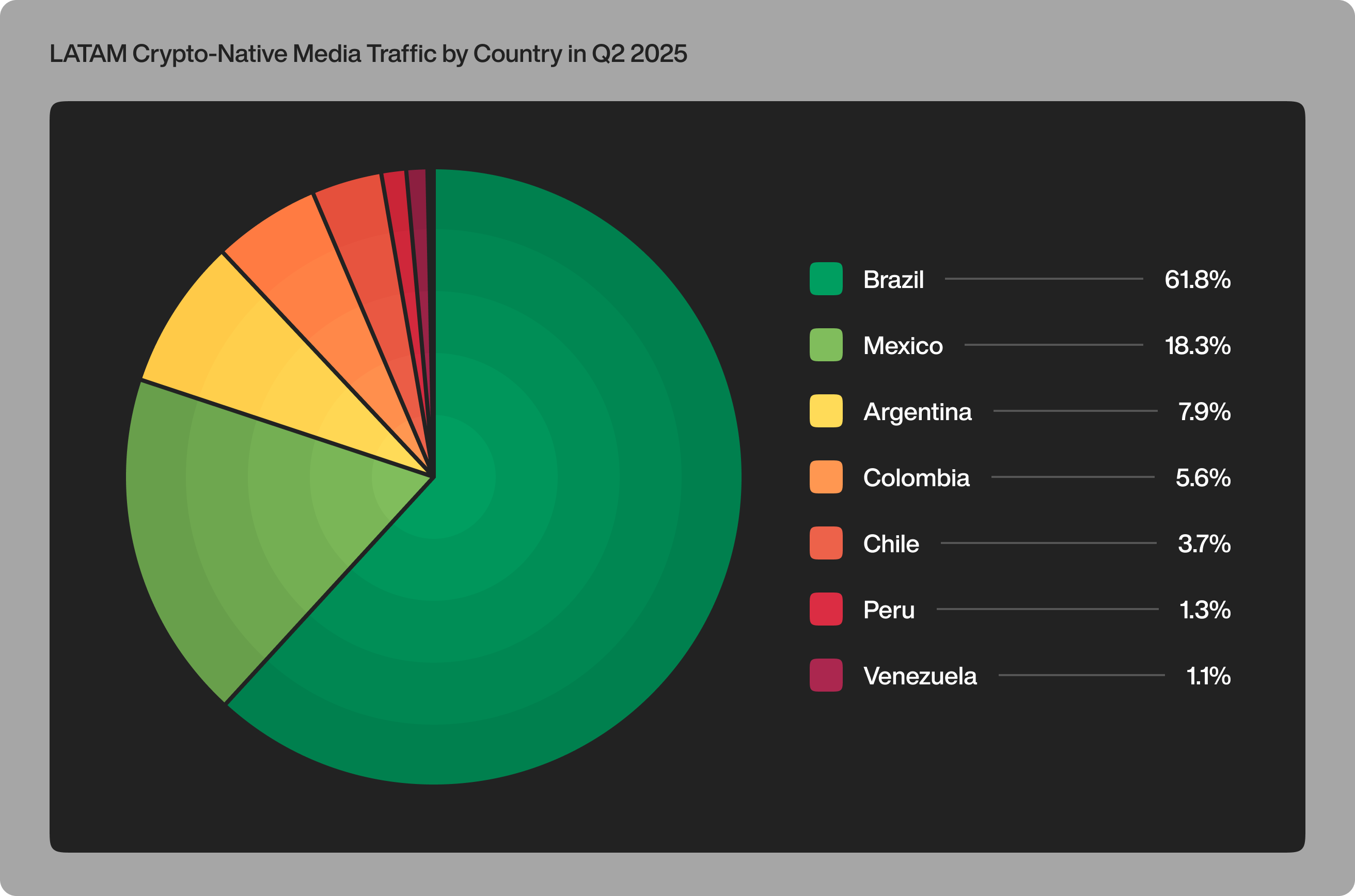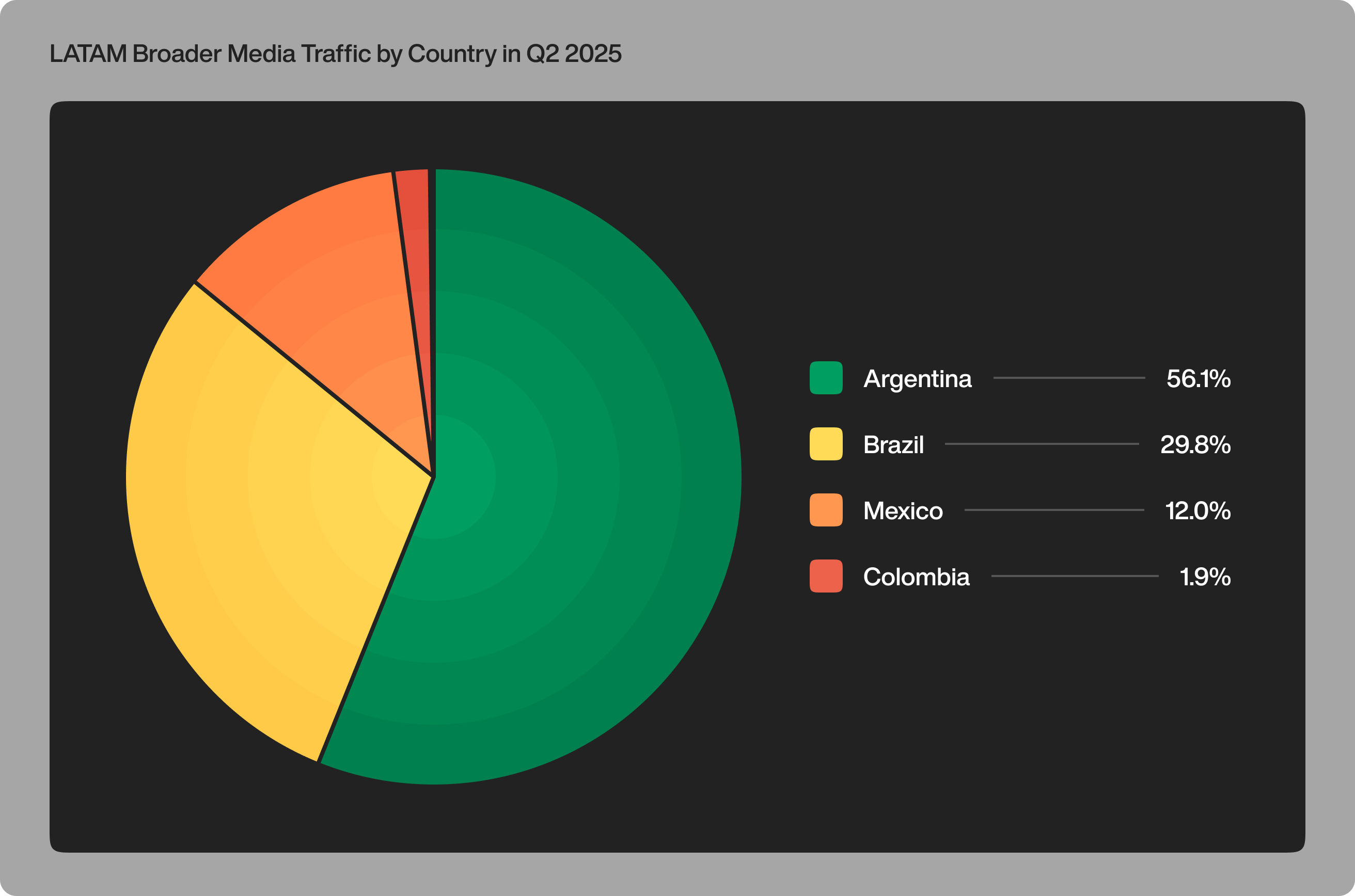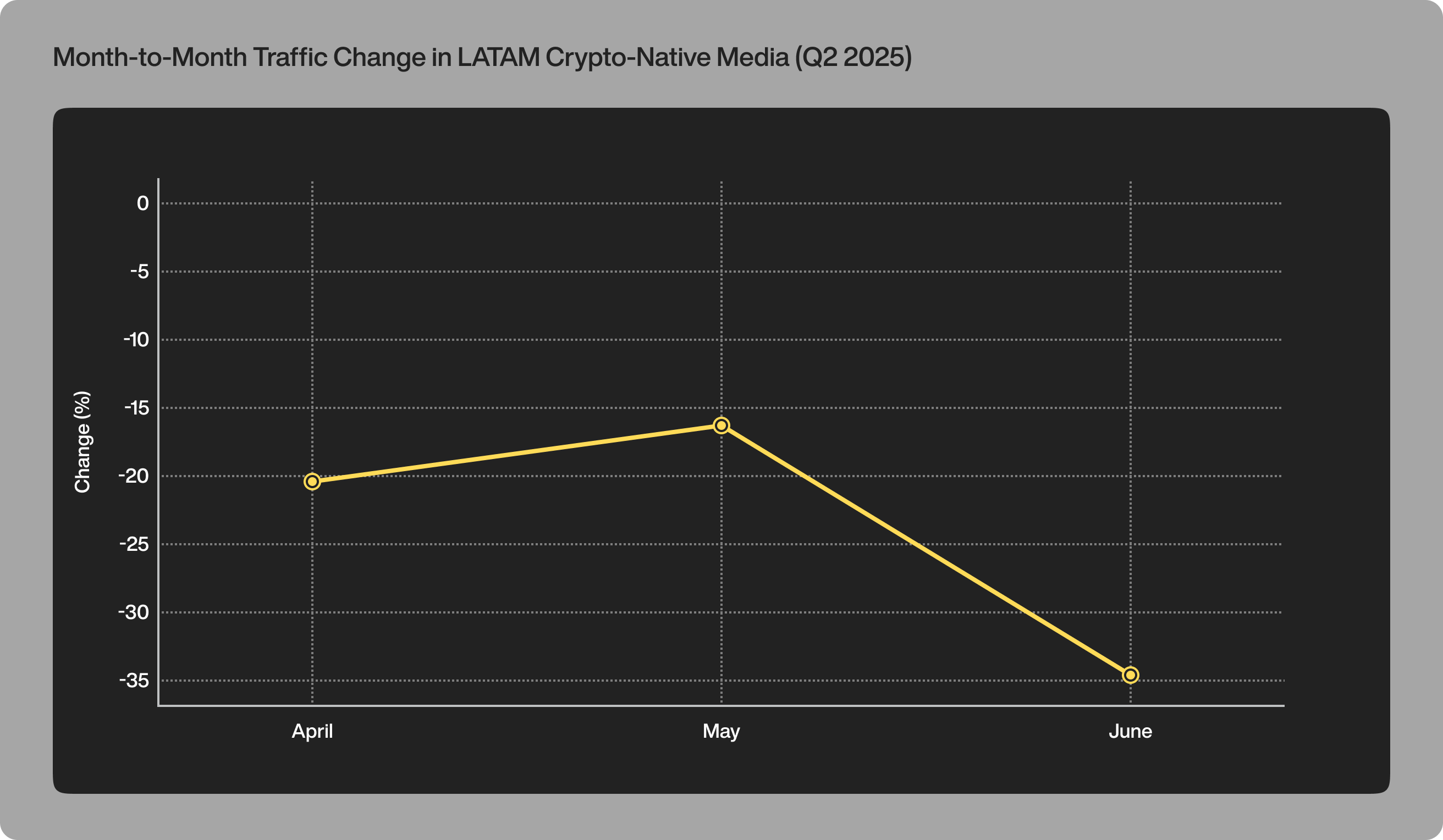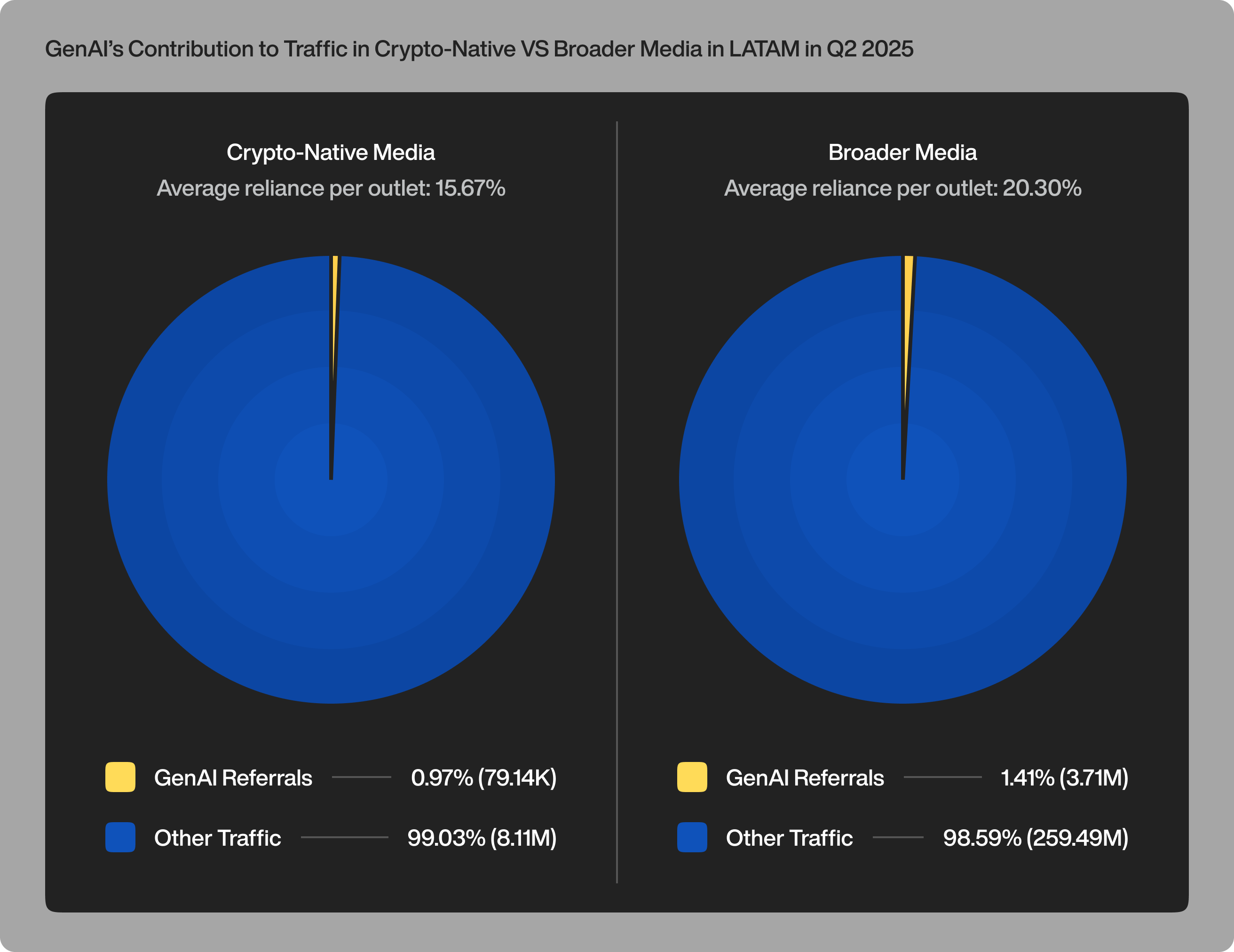Quick Breakdown:
- Crypto adoption in Latin America is booming, yet interest in crypto-native media is falling—hinting at a shift from hype to real-world integration.
- Latin America’s crypto scene is maturing: stability, utility, and infrastructure are replacing speculation and social media buzz.
- Media consolidation is reshaping the landscape, with readers favoring quality and credibility over quantity and noise.
- Social platforms and emerging AI tools are becoming the primary channels for discovering crypto news, moving away from traditional search engines.
- Crypto in Latin America is no longer a niche trend, it’s becoming part of the region’s financial and digital DNA.
Crypto adoption in Latin America is accelerating faster than in almost any other region. Yet, something unexpected is happening, people are using crypto more but reading about it less on crypto-native platforms.
According to Outset PR’s Q2 2025 report, crypto adoption in Latin America jumped by 18.3%, even as traffic to crypto-specific media fell by 54%.
It’s a striking contrast: as more people integrate crypto into their daily lives, engagement with the media that built the movement is shrinking.
So, what’s really going on? Has enthusiasm cooled off, or has crypto in Latin America evolved beyond its early hype phase?
Adoption Without the Hype: How LATAM Became a Mature Market
A few years ago, crypto in Latin America was defined by early adoption, fast profits, and social media buzz. That era is fading. The focus has shifted toward stability, functionality, and infrastructure.
Take Visa and Stripe’s Bridge project, for example, it’s bringing stablecoin-linked payment cards to the region, allowing users to spend digital assets just like fiat currency.
Governments are also catching up. In Brazil, the Brazilian Virtual Assets Law (BVAL) of 2022/2023 set out clear rules for crypto companies—covering KYC, transaction reporting, and compliance. The Banco de Brasil (BCB) now oversees AML and counter-terrorism compliance, signaling a decisive move toward regulated crypto integration.
Also Read: Crypto Regulation Around The World: Latin America
This evolution is being driven by a young, tech-forward population—mostly Millennials and Gen Z—who see crypto not as an experiment, but as a natural upgrade to the systems they inherited. This new wave of users is pushing crypto adoption in Latin America from speculation to stability.
Brazil vs. Argentina: Two Models of Crypto Maturity
When we talk about crypto adoption by country, Brazil and Argentina stand out as clear leaders, but for different reasons.
Brazil dominates the region’s crypto-native ecosystem, commanding over 60% of all regional traffic. Its edge comes from regulatory clarity, strong institutional involvement, and advanced infrastructure.

One prime example is BTG Pactual’s Mynt, a crypto trading platform launched by Latin America’s largest investment bank. With such institutional backing, Brazil’s crypto market has matured into a robust ecosystem where retail and institutional players coexist confidently.
Meanwhile, Argentina leads in mainstream crypto conversations, accounting for 56% of media coverage.

The country faces one of the world’s highest inflation rates, exceeding 200% year-over-year as of mid-2024. This persistent inflation has eroded public trust in the peso. Consequently, Argentines increasingly turn to cryptocurrencies and stablecoins as alternative stores of value.
Also Read: Is Crypto Adoption Strongest Where Fiat Is Weakest?
In Argentina, crypto is not a subculture but part of everyday economic life. Major news outlets regularly report on crypto-related policies, exchange rates, and market movements, showing just how deeply crypto in Latin America—particularly in Argentina—has become integrated into public and economic life..
Brazil’s strength lies in specialization, built on institutional infrastructure and regulation. Argentina’s strength lies in integration, where crypto has become deeply woven into the public and media narrative. Together, they illustrate the diversity of crypto adoption by country within the region.
The Shrinking Bubble: Media Consolidation and Diversity Collapse
Outset PR data shows crypto-native media visibility in Latin America has dropped 54%, with CriptoNoticias alone capturing most of the remaining audience.

This consolidation reflects a more mature, selective information ecosystem. Readers now prefer trusted, established sources, while smaller outlets struggle to stay visible or funded.
Although the decline in media diversity is concerning, it also points to sustainability. As the speculative frenzy fades, attention is shifting from click-driven coverage to credible journalism.
Discoverability Shift: From Google to AI and Social Channels
How Latin Americans find crypto news is changing fast. Traditional search engines like Google are losing traction as AI-driven platforms such as ChatGPT and Perplexity emerge as new discovery gateways. While AI currently drives just about 1% of traffic, that share is rising steadily.

Meanwhile, social platforms remain central to crypto discourse. X (formerly Twitter) drives roughly 42% of all crypto-related social engagement, maintaining its position as the region’s digital town square. LinkedIn is also gaining traction, contributing about 8% of crypto news interactions and reflecting the professionalization of the conversation. Additionally, WhatsApp and other private messaging networks play a significant role in the informal circulation of crypto information.
The shift shows that discovery is not solely based on traditional search but also moving toward social and AI-driven channels.
Quality Over Quantity: Attention vs. Visibility
Not all traffic signals real influence. High visitor counts can mask shallow engagement, where readers click but quickly move on.
Recent data from Latin America’s crypto media landscape shows that while some platforms are expanding their reach, only a few are capturing sustained audience attention. The difference lies in depth, time spent, pages explored, and reader return rates.
Outlets that prioritize substance over visibility are building genuine trust. Their readers stay longer, engage more deeply, and treat content as a source of insight rather than quick updates. Others, though growing fast, attract fleeting attention, highlighting that rapid traffic gains do not always translate into lasting audience relationships.
Conclusion: From Speculation to Integration
Crypto in Latin America is not fading; it is maturing. The decline in crypto-native media traffic does not signal disinterest, but rather a structural shift. The region is moving from speculative enthusiasm toward institutional and societal integration.
This transformation reflects the broader global crypto trajectory. The thrill of rapid growth is being replaced by the steady progress of infrastructure development, regulatory frameworks, and real-world adoption.
Today, crypto adoption in Latin America is defined not by who can grab the most attention, but by who can build the most enduring systems.
Crypto has become part of the region’s financial and digital fabric, not as a passing trend, but as a lasting foundation.
Disclaimer: This article is intended solely for informational purposes and should not be considered trading or investment advice. Nothing herein should be construed as financial, legal, or tax advice. Trading or investing in cryptocurrencies carries a considerable risk of financial loss. Always conduct due diligence.
If you want to read more market analyses like this one, visit DeFi Planet and follow us on Twitter, LinkedIn, Facebook, Instagram, and CoinMarketCap Community.



















